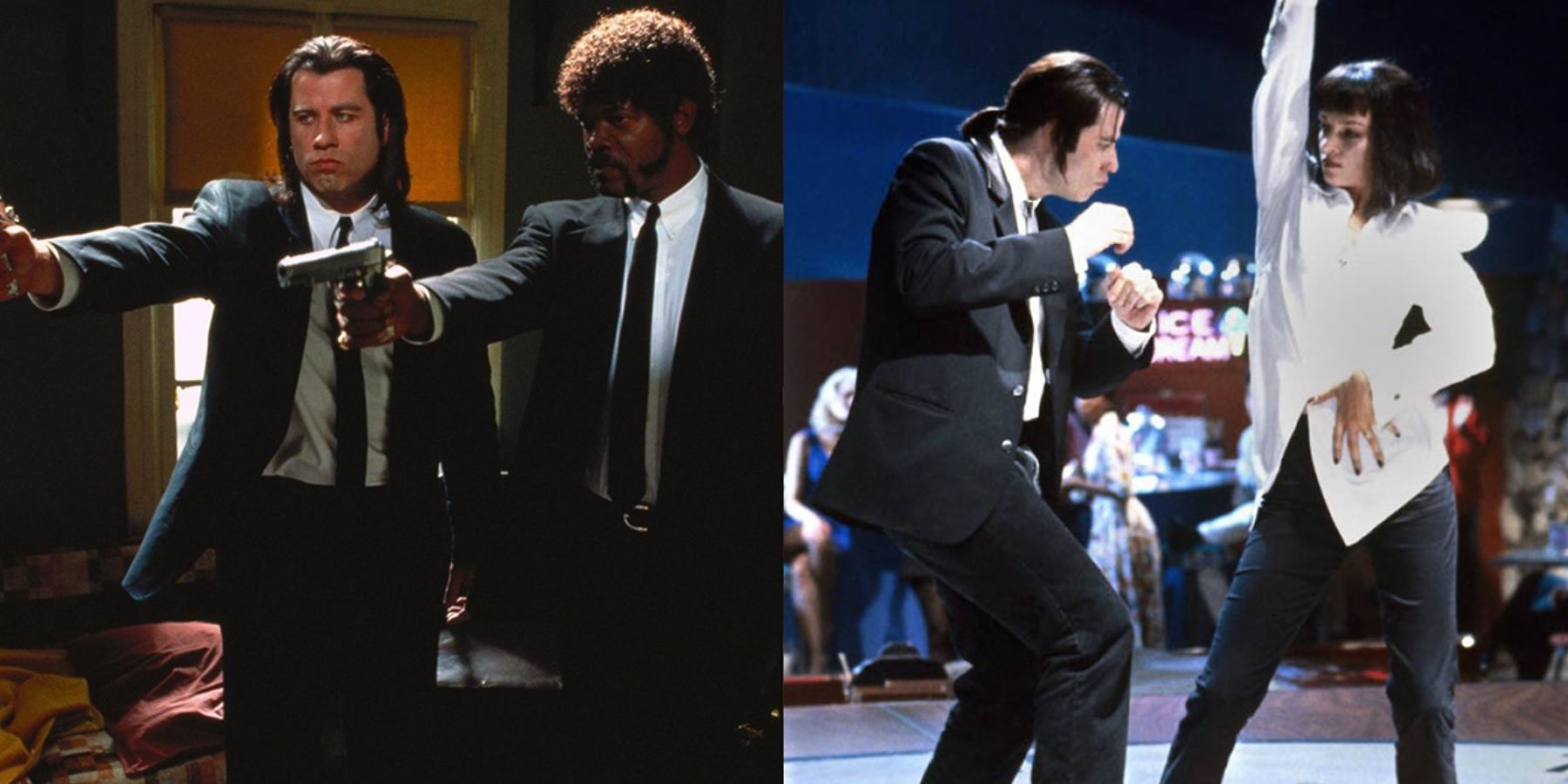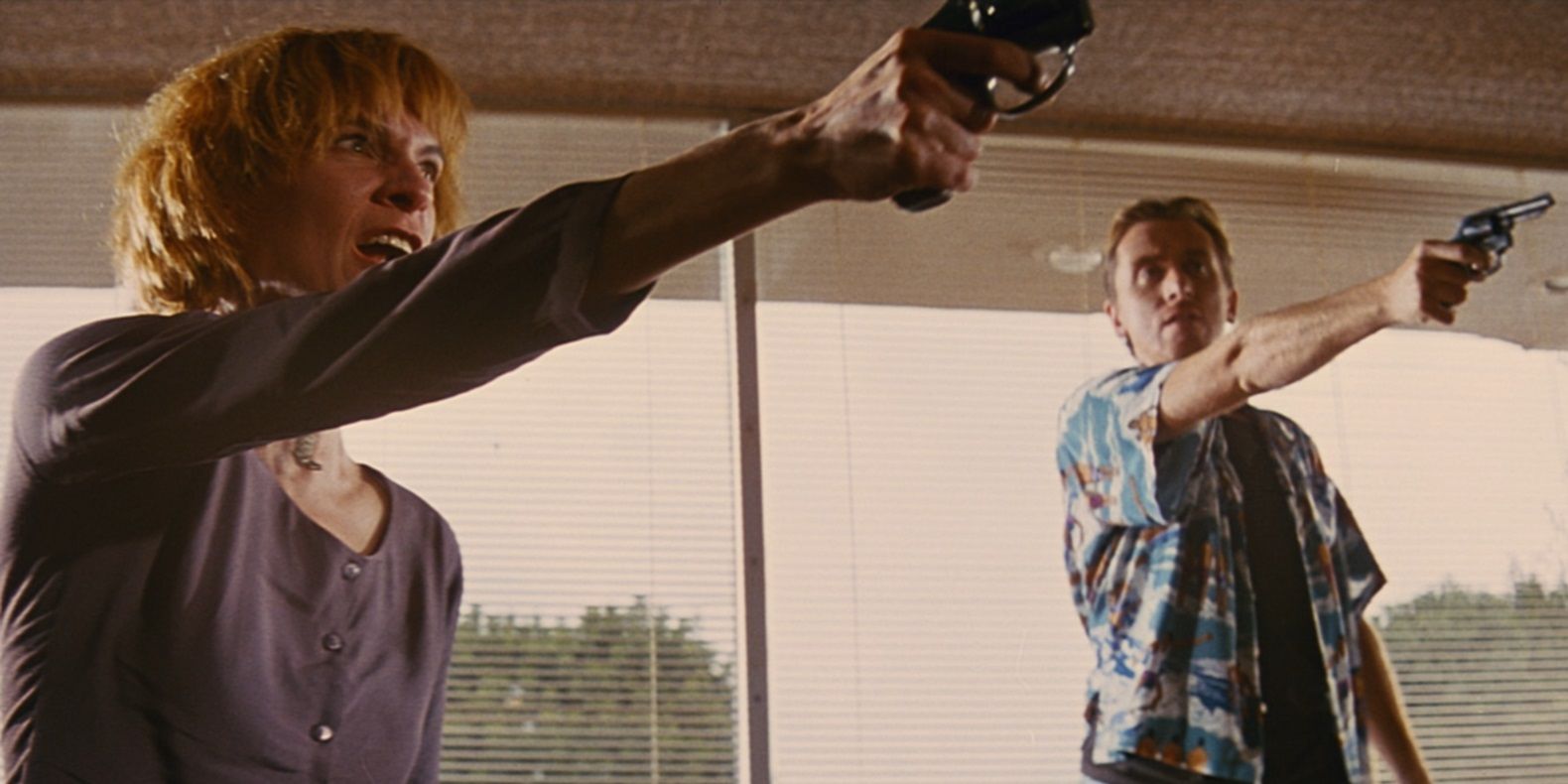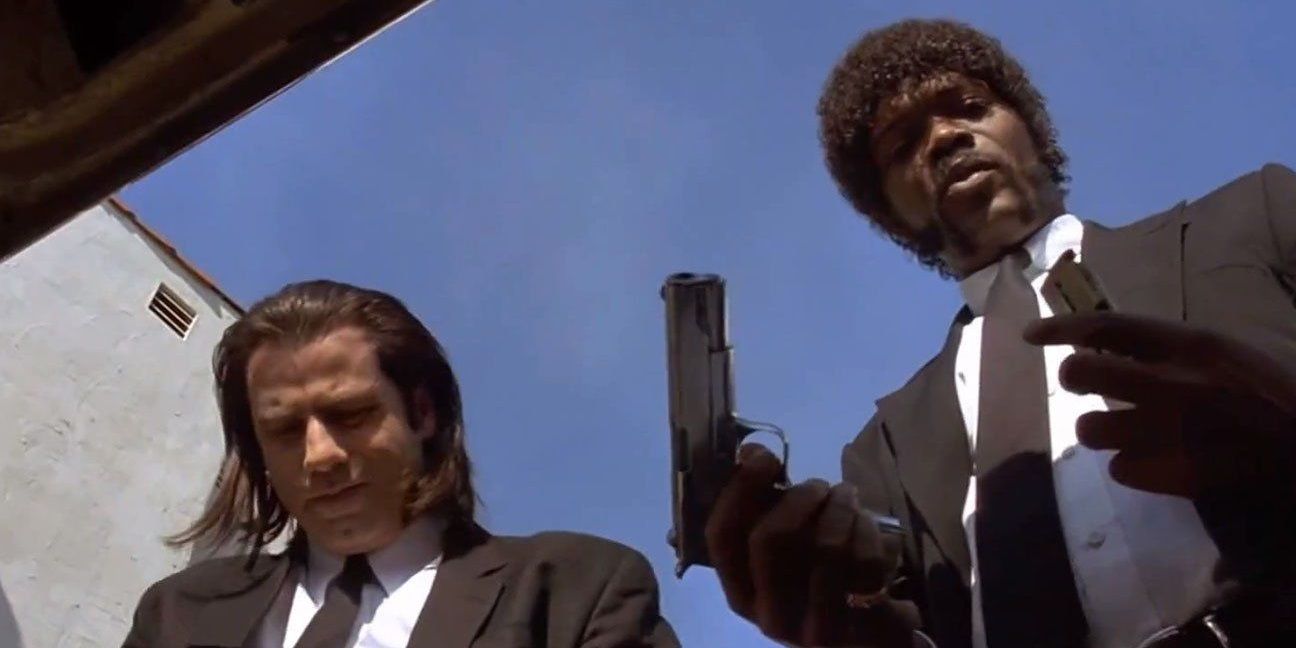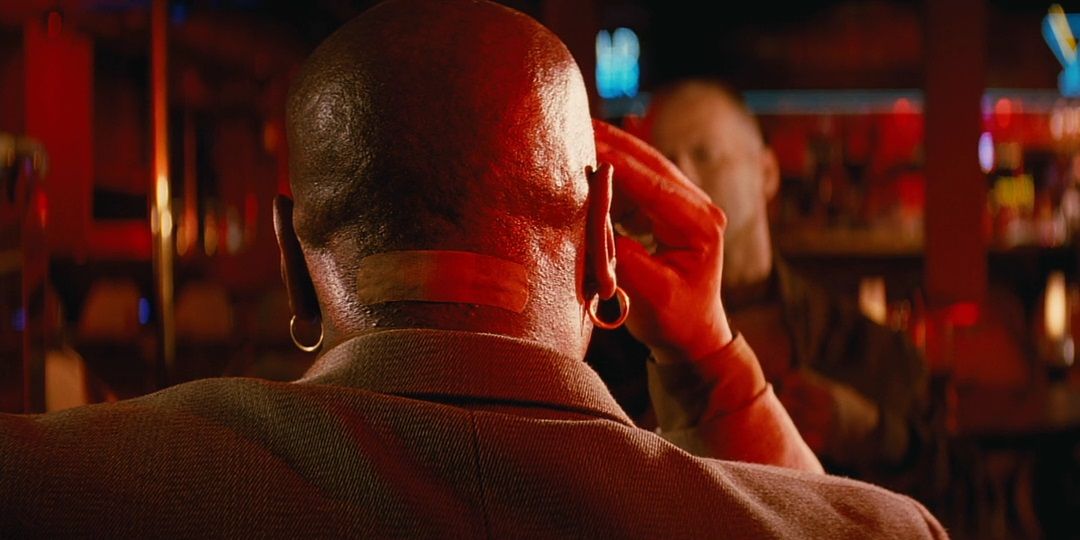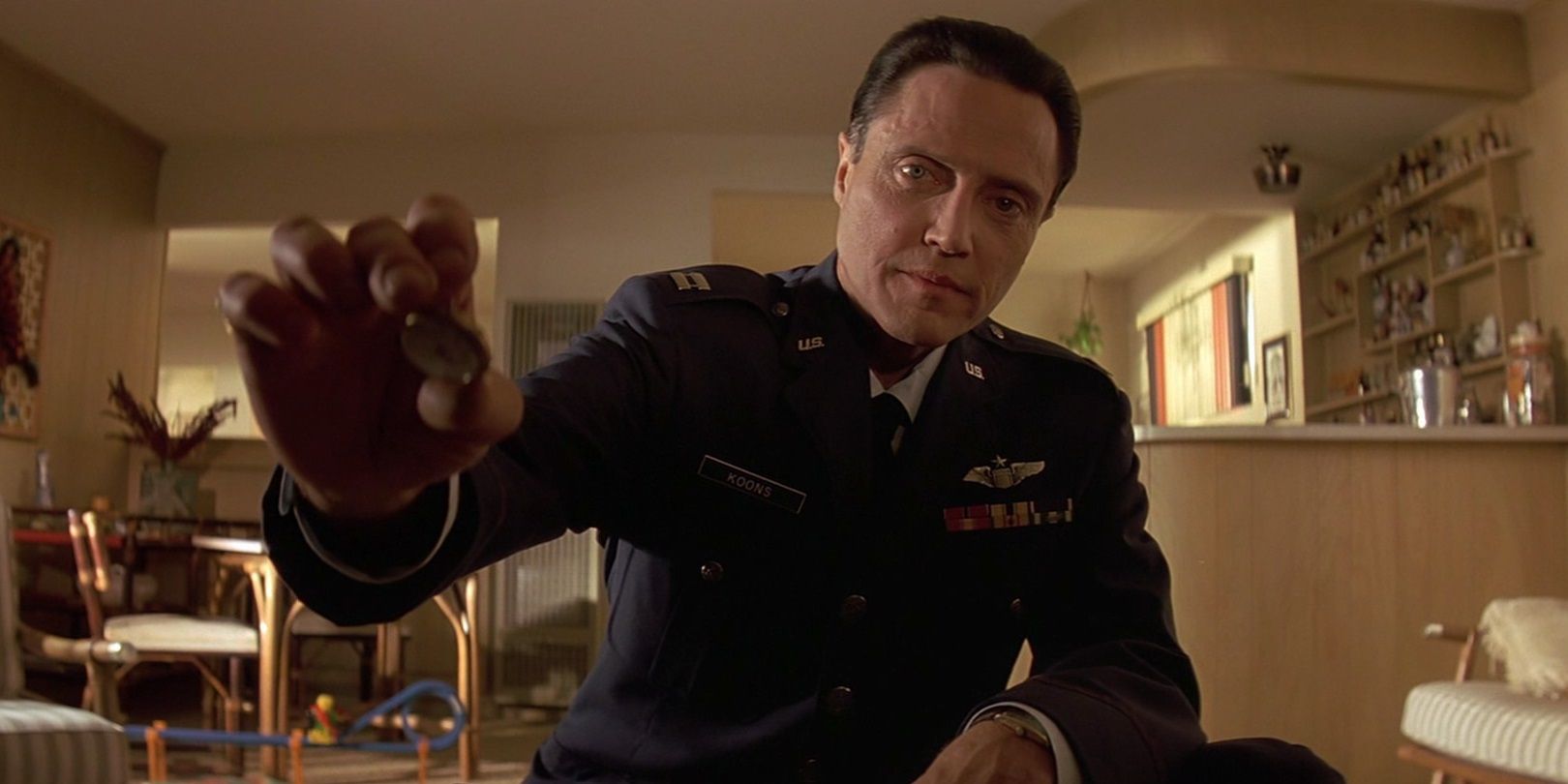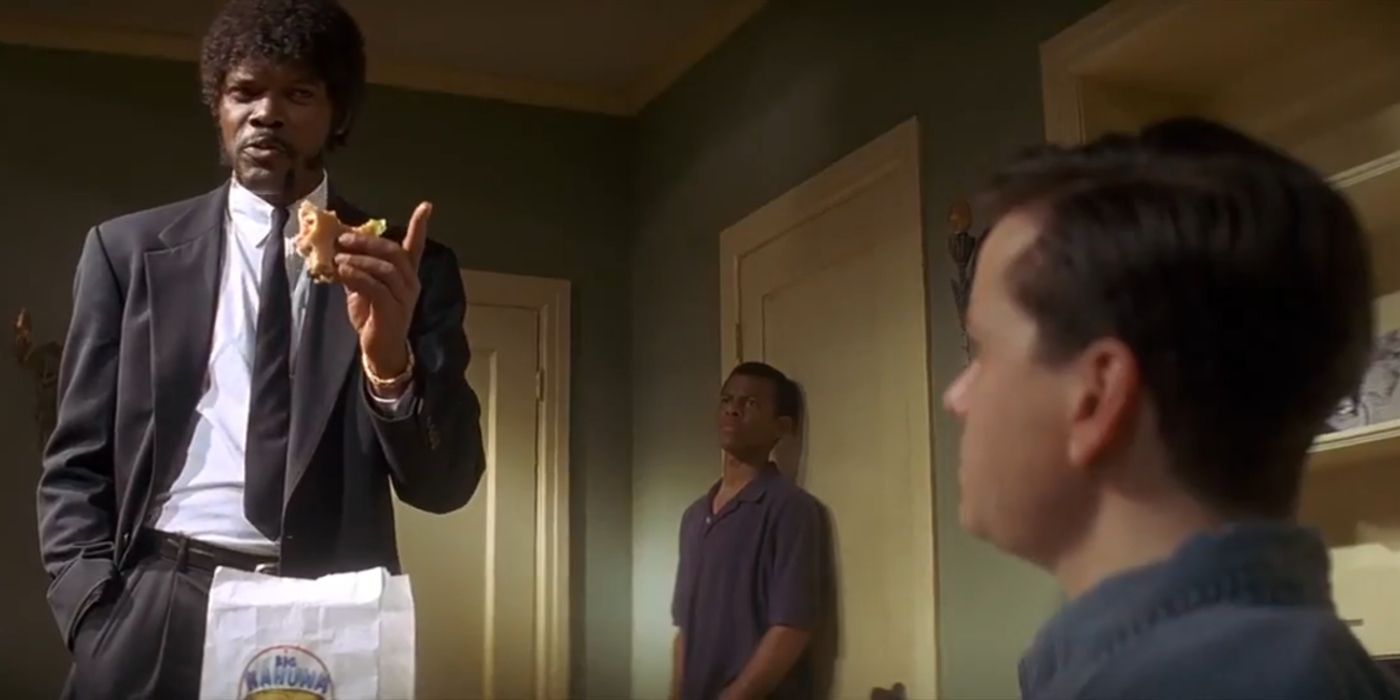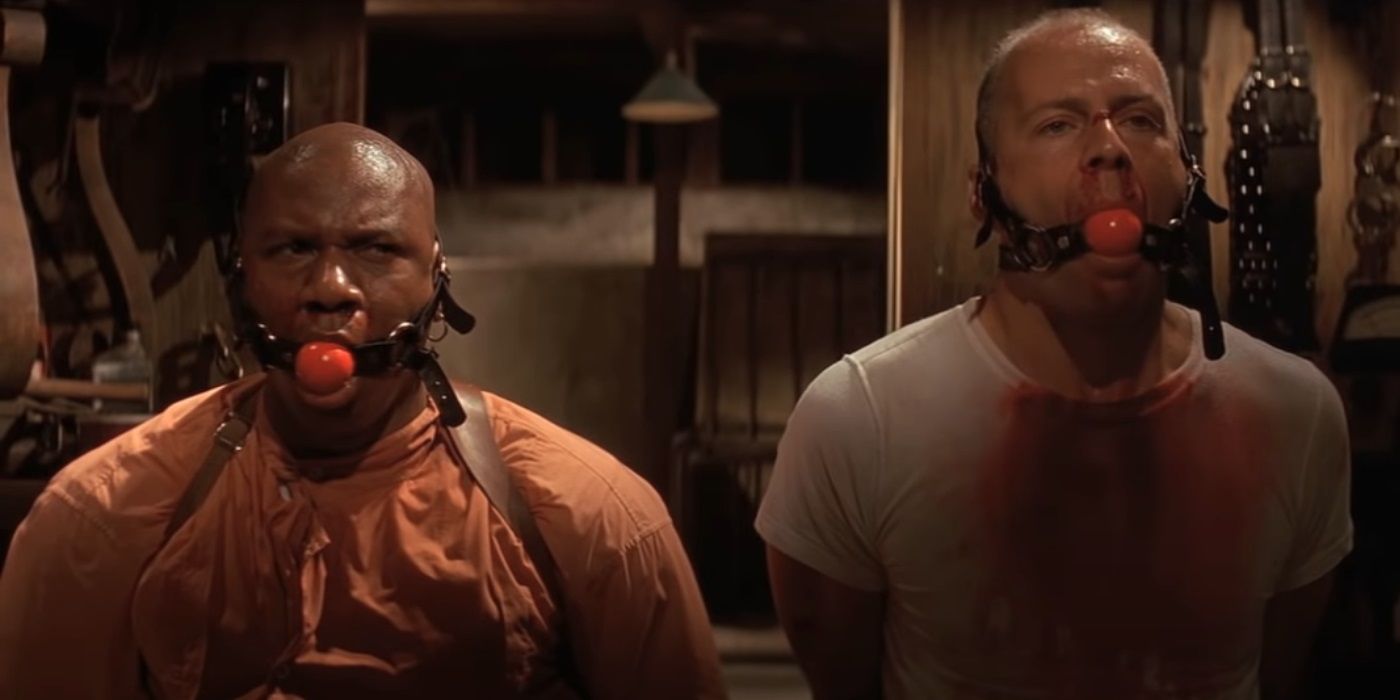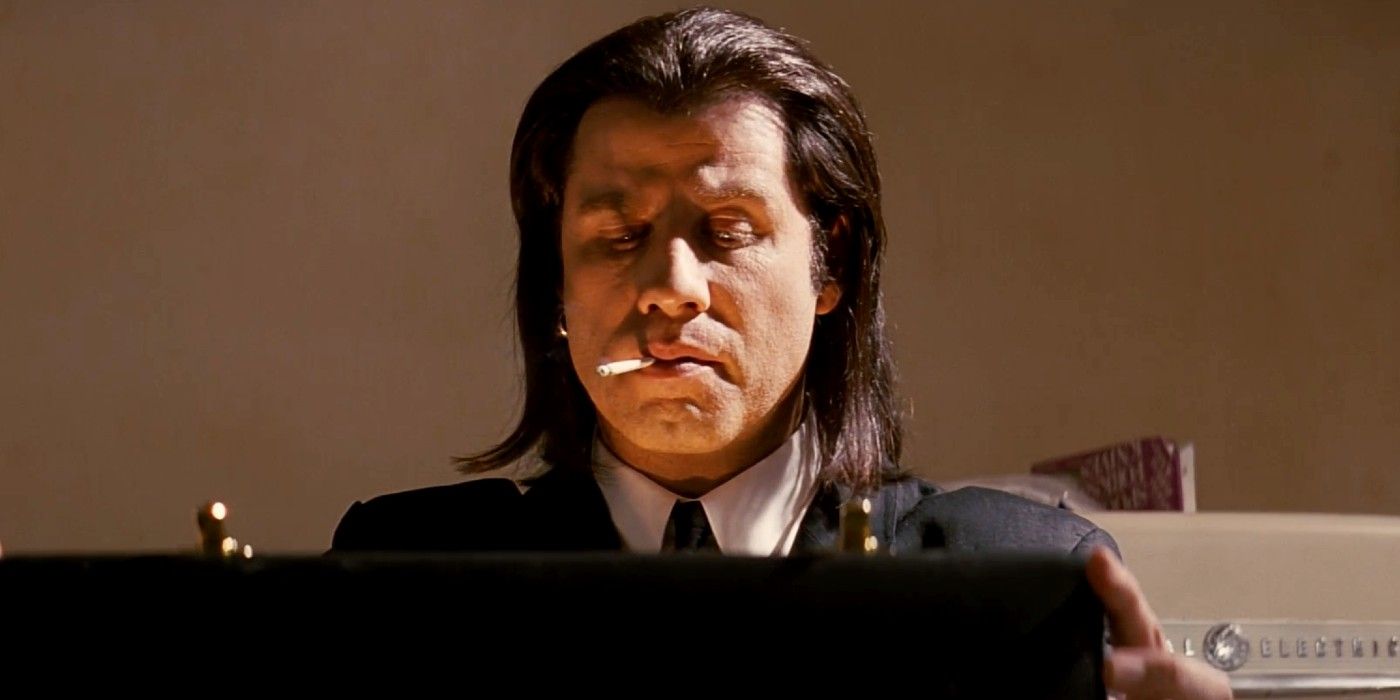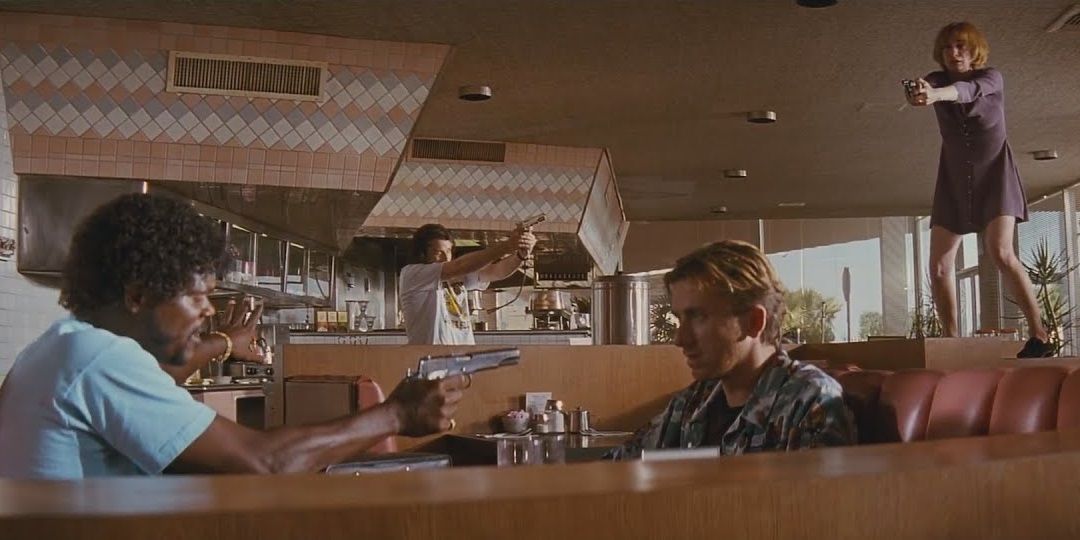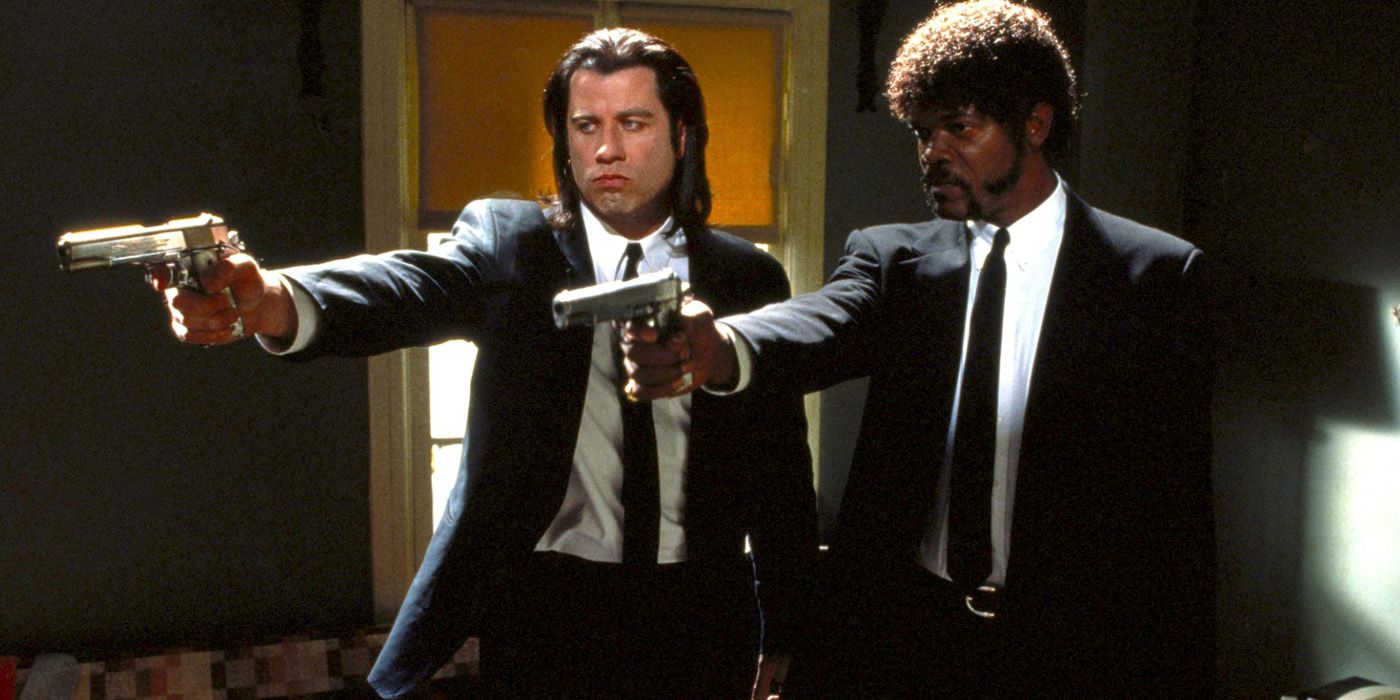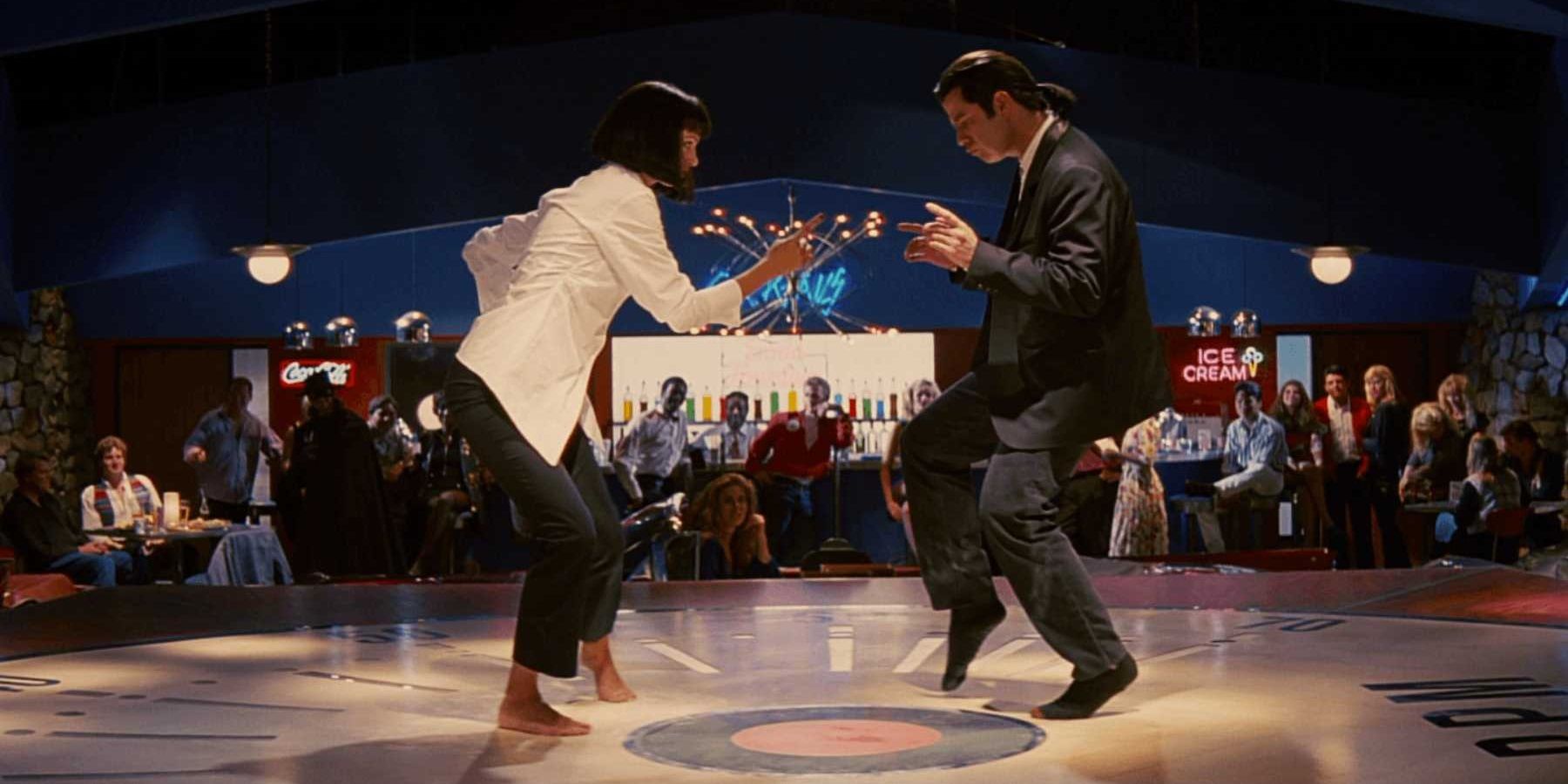Quentin Tarantino is one of the most revered, influential, and visually distinctive filmmakers of the past three decades. Over the years, he’s been daring enough to tell a heist story without the heist, blow up a revenge-driven exploitationer into a two-part four-hour epic, and kill off Adolf Hitler in a delightfully inaccurate manner. In a career full of iconic movies, Tarantino’s sophomore directorial effort – 1994’s Pulp Fiction – is still arguably his most iconic work.
An undeniable staple of pop culture, Pulp Fiction is full of instantly recognizable images, from the Jack Rabbit Slim’s dance contest to Jules and Vincent taking aim with a pair of handguns.
Pumpkin And Honey Bunny Stick Up A Diner
Pulp Fiction’s opening freeze frame is one of its most recognizable shots. Pumpkin and Honey Bunny spend the opening scene discussing different ways to make an illegitimate living. They’ve been robbing liquor stores and convenience stores, but decide they’d be a lot better off robbing diners like the one they’re in.
By the end of the scene, they’re pulling out guns and holding up the diner. Honey Bunny cries out, “Any of you f*****g p***ks move and I’ll execute every motherf*****g last one of ya!” The frame freezes as Dick Dale’s “Misirlou” kicks in on the soundtrack.
The Trunk Shot
The “trunk shot” is one of Tarantino’s signature shots. It was first seen in Reservoir Dogs when Mr. Blonde showed his kidnapped cop, Marvin Nash, to Mr. White and Mr. Pink. In Pulp Fiction, Tarantino utilizes a similar shot when Jules and Vincent get their guns out of the trunk.
This shot has since appeared in just about every subsequent Tarantino movie (except the historical ones that take place before cars and therefore trunks had been invented).
Marsellus Bribes Butch
When crime boss Marsellus Wallace is convincing boxer Butch Coolidge to accept his bribe to take a dive to fix a crucial upcoming fight, Tarantino captures the whole monologue in a locked-off shot on the back of Marsellus’ head. Not showing Marsellus’ face builds an air of mystique around the character.
The Band-Aid on Marsellus’ head has been the source of countless fan theories. The most popular one suggests the Devil took Marsellus’ soul through the back of his head (and that’s what’s in the glowing briefcase).
The Gold Watch Monologue
The prologue of “The Gold Watch” storyline explains the significance of the titular timepiece. It’s an heirloom passed on by a war buddy of Butch’s late father upon his return from Vietnam. Christopher Walken delivers the whole monologue in a single unbroken take.
This still, sustained shot keeps the audience’s focus on the performance. There are no stylish visual flourishes to get in the way of Walken’s captivating work. His Pulp Fiction monologue is one of the most iconic monologue deliveries of all time (paralleled only by Samuel L. Jackson’s own Ezekiel 25:17 monologue from the same movie).
The Path Of The Righteous Man
Before killing Brett, Jules launches into a reading of Ezekiel 25:17. In true Tarantino fashion, this isn’t the real passage from the Bible; it’s the fake version from the Sonny Chiba martial arts movie Karate Kiba.
Jackson’s mesmerizing monologue is captured in a low angle over Brett’s shoulder. This angle makes Jules look appropriately intimidating as he recites a Biblical passage ahead of a gruesome mob hit.
Butch And Marsellus Wake Up In The Pawnshop Basement
The image of Butch and Marsellus trapped in a basement conveys the darkest twist in the movie. The climactic action of “The Gold Watch” segment seems to be a brutal showdown between Butch and Marsellus.
But then, it takes a wildly unexpected left turn as they’re both knocked unconscious and tied up in the basement of a sleazy pawnshop. The two-shot of this duo gagged and bound is a perfect symbol of Pulp Fiction’s uniquely pitch-black comedic sensibility.
Vincent Opens The Glowing Briefcase
Some of Tarantino’s most iconic shots are taken from other movies, and the glowing briefcase in Pulp Fiction is a prime example. It’s a nod to the seminal film noir classic Kiss Me Deadly.
Like Marsellus’ Band-Aid, this briefcase is another source of fan theories. It’s theorized to contain everything from Elvis Presley’s gold suit to Marsellus’ soul ripped out of his head by Satan. The beauty of this shot is its ambiguity. There are no right or wrong answers about what is in this briefcase.
The Climactic Standoff
The final scene of Pulp Fiction brings the nonlinear structure full circle. The ending goes back to the diner held up by Pumpkin and Honey Bunny in the opening scene, only to reveal that Jules and Vincent were sitting at a table across from them the whole time.
Pulp Fiction’s closing armed standoff is similar to the climactic sequence in Reservoir Dogs. Once again, the gunmen are scattered across a wide shot encompassing the whole location, except the abandoned warehouse is switched out for a crowded diner.
Jules And Vincent Take Aim
Jules and Vincent standing side-by-side with guns in Brett’s apartment is one of the most recognizable movie screenshots of all time. This image is a staple of t-shirts and phone wallpapers.
When the structure comes back around to the action in Brett’s apartment, a hidden roommate runs out, empties a “hand cannon,” and manages to miss the hitmen with every single shot. With pitch-perfect comic timing, Jules and Vincent process the supposed miracle that just took place, then look at each other, look back at the shooter, and open fire.
The Jack Rabbit Slim’s Dance Contest
This shot is another staple of t-shirts and college dorms. The dance contest that Vincent and Mia take part in at the ‘50s-style Jack Rabbit Slim’s restaurant is the closest thing to a Tarantino musical number. This sequence visualizes the fizzling romantic tension that underlines the “Vincent Vega and Marsellus Wallace’s Wife” storyline.
The characters’ old-timey dance moves paired with the sounds of “You Never Can Tell” by Chuck Berry defined Tarantino’s “cinema of cool” aesthetic.

